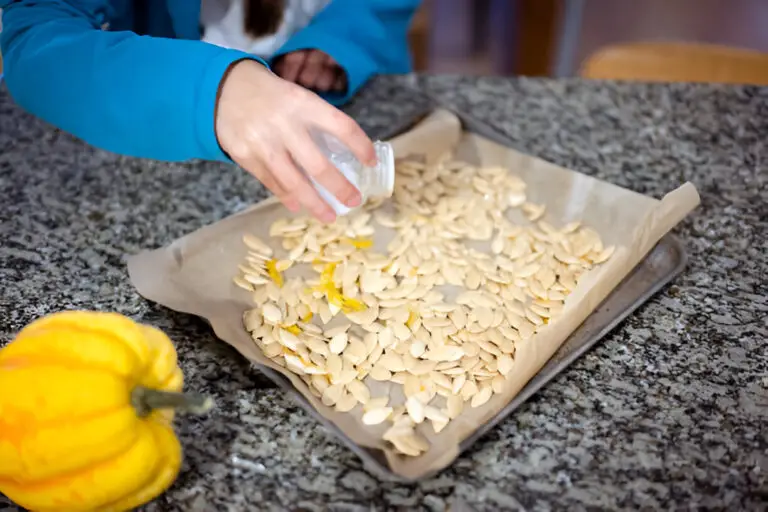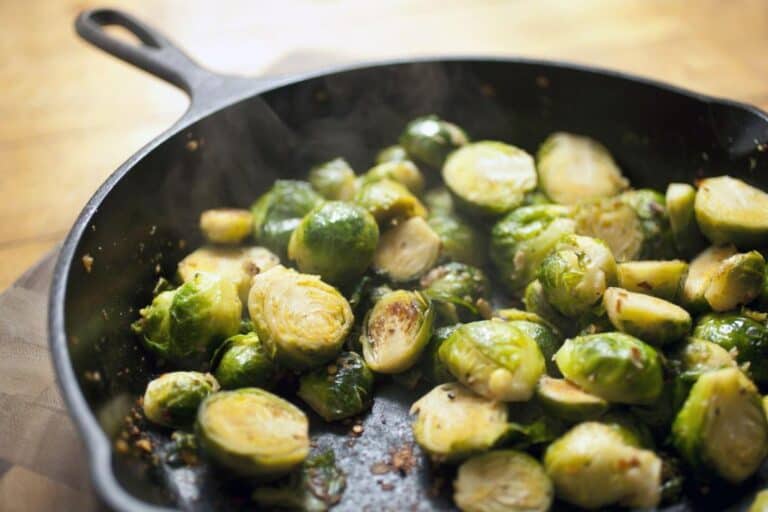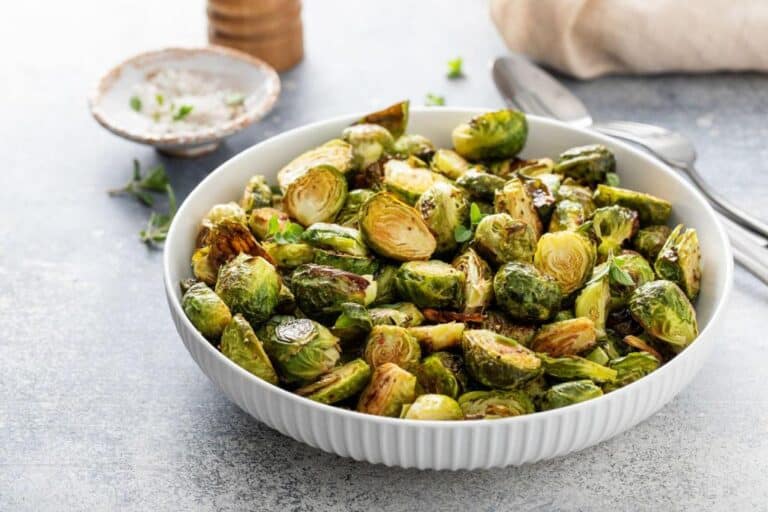Can You Freeze Shaved Brussels Sprouts? Preserving Perfection
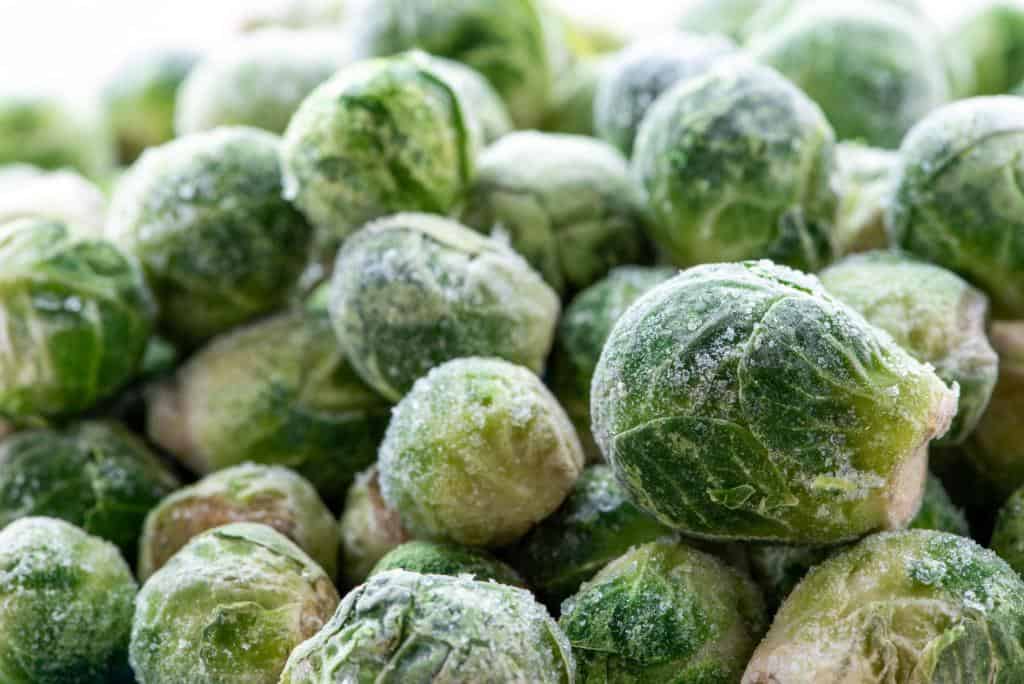
Picture this: You’re in the kitchen, armed with a sharp knife and a bunch of fresh Brussels sprouts. As you carefully shave off thin slices, your mind starts to wander. What if you could preserve the perfect texture and flavor of these delectable greens for later use? Can you freeze shaved Brussels sprouts and still enjoy their deliciousness when the craving strikes?
The answer is a resounding yes! Freezing shaved Brussels sprouts is not only possible but also a fantastic way to extend their shelf life and reduce food waste. But how do you ensure that they retain their freshness and culinary excellence?
In this article, we will delve into the art of freezing shaved Brussels sprouts, guiding you through the steps to preserve their perfection. Get ready to unlock the secrets of freezing this versatile vegetable, so you can enjoy its delightful taste and texture long after it leaves the cutting board.
Why Do You Need to Shave Brussels Sprouts?
Shaving Brussels sprouts is a culinary technique that adds a touch of finesse to many recipes, enhancing both the texture and flavor of the sprouts. Imagine taking those petite green orbs and transforming them into delicate ribbons, ready to be infused with delicious seasonings. The result is a more enjoyable eating experience, where the sprouts effortlessly blend with other ingredients, creating a harmonious symphony of taste and satisfaction.
When Brussels sprouts are shaved, their texture undergoes a magical metamorphosis. Instead of encountering large, dense chunks, you are presented with thin, tender ribbons that glide effortlessly on your palate.
This refined texture allows the flavors to mingle more effectively, ensuring each bite is a delightful balance of crispness and tenderness. A simple salad, sautéed side dish, or even a roasted entrée can be elevated to new heights with the addition of shaved Brussels sprouts.
Moreover, shaving Brussels sprouts has the added benefit of mellowing their strong, distinctive flavor. These miniature cabbages possess a slightly bitter and earthy taste, which can be overpowering for some palates.
By shaving them, you can soften their flavor profile, making them more approachable and enjoyable for a wider range of tastes. The gentle shaving process reduces the intensity of the sprouts, allowing their inherent sweetness to shine through and harmonize with other ingredients in a dish.
Shaving Brussels sprouts can be a practical choice when time is of the essence. These finely shredded ribbons cook more rapidly than their whole or halved counterparts. This can be a godsend on those busy weeknights when you crave a wholesome meal but are short on time. By shaving the sprouts, you can reduce the cooking time without compromising on flavor or texture, ensuring a swift and satisfying culinary experience.
To achieve the art of shaving Brussels sprouts, several methods are at your disposal. A sharp knife, mandoline, or food processor can all be enlisted to transform the sprouts into delicate ribbons of green goodness.
Regardless of the method you choose, it is essential to first remove any wilted or damaged outer leaves before embarking on the shaving process. This ensures that only the freshest and most vibrant parts of the sprouts make their way into your dish, enhancing both aesthetics and taste.
The Science Behind Freezing Brussels Sprouts
Freezing is a popular preservation method that can extend the shelf life of many foods, but how does it affect Brussels sprouts? When Brussels sprouts are frozen, the low temperature causes the water inside the cells to form ice crystals. These ice crystals can disrupt the cell structure, leading to changes in texture and potentially affecting the flavor.
The impact of freezing on the nutritional value of Brussels sprouts is relatively minimal. While there may be a slight loss of certain nutrients during the freezing process, the overall nutritional content remains largely intact. Freezing is an effective way to lock in the vitamins, minerals, and antioxidants present in shaved Brussels sprouts.
To ensure the best results when freezing Brussels sprouts, it’s essential to follow proper techniques and guidelines.
Preparing Shaved Brussels Sprouts for Freezing
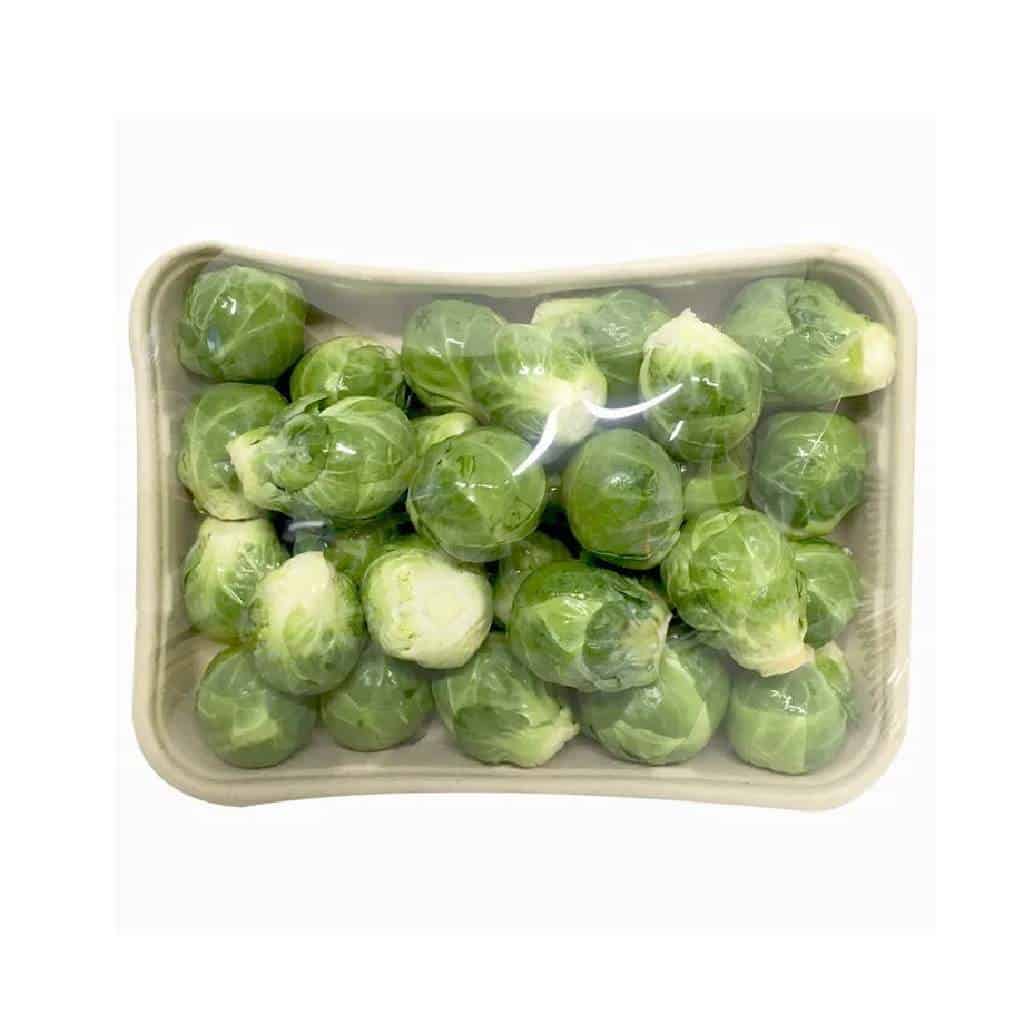
Before freezing, start with fresh and high-quality Brussels sprouts. Look for sprouts that are firm, vibrant green, and free from any signs of decay or damage. This will ensure that the frozen sprouts retain their quality during storage.
Begin by washing the Brussels sprouts thoroughly under cool running water to remove any dirt or debris. Trim the tough outer leaves and any stems, if present. To achieve the desired thinness, use a sharp knife or a mandoline slicer to shave the sprouts into delicate, paper-thin slices. This not only enhances their visual appeal but also helps in the freezing process.
To preserve the color and texture of the shaved Brussels sprouts, blanching or steaming is recommended before freezing. To stop the cooking process, blanching involves briefly boiling the sprouts in salted water and then immediately cooling them in an ice bath.
Steaming is an alternative method that involves placing the sprouts in a steamer basket above boiling water until they become slightly tender. Both methods help retain the sprouts’ vibrant green color and reduce the risk of enzymatic reactions that can degrade their quality during freezing.
Freezing Methods for Shaved Brussels Sprouts
Once the shaved Brussels sprouts have been blanched or steamed, it’s time to freeze them. Follow these step-by-step instructions for optimal results:
- Flash Freezing: Arrange the blanched or steamed sprouts in a single layer on a baking sheet or tray lined with parchment paper. Make sure they are not touching each other. Place the tray in the freezer for a few hours, or until the sprouts are frozen solid. Flash freezing prevents the sprouts from clumping together and allows for easy portioning later on.
- Packaging Options: After flash freezing, transfer the frozen sprouts into suitable food storage containers. Options include freezer-safe bags, airtight containers, or vacuum-sealed bags. Remove as much air as possible from the packaging to minimize the risk of freezer burn and maintain the sprouts’ freshness. If using bags, squeeze out excess air before sealing. If using containers, leave a small headspace to accommodate any potential expansion during freezing.
- Labeling and Storing: Proper labeling is essential for easy identification and to keep track of the storage time. Write the date of freezing on each package or container. Store the frozen shaved Brussels sprouts in the coldest part of the freezer, ideally at or below 0°F (-18°C). They can be stored for up to 12 months, but for the best quality, it is recommended to consume them within 6 to 8 months.
Thawing and Using Frozen Shaved Brussels Sprouts
Thawing frozen shaved Brussels sprouts is a simple process. There are a few methods you can use:
- Refrigerator Thawing: Place the frozen sprouts in a bowl or airtight container and thaw them in the refrigerator overnight. This slow and gentle thawing method helps retain the sprouts’ texture and prevents any potential loss of flavor.
- Cold Water Thawing: If you need to thaw the sprouts more quickly, seal them in a leak-proof plastic bag and submerge the bag in a bowl of cold water. Change the water every 30 minutes until the sprouts are thawed. This method is faster than refrigerator thawing but requires more active monitoring.
Once thawed, it’s important to use the frozen shaved Brussels sprouts promptly. Avoid refreezing thawed sprouts, as it can affect their texture and quality.
Cooking Methods and Recipe Ideas for Frozen Brussels Sprouts
Frozen shaved Brussels sprouts can be cooked in various ways to enhance their flavor and texture. Here are some cooking methods and recipe ideas to inspire your culinary adventures:
- Roasting: Toss the thawed sprouts with olive oil, salt, and pepper. Spread them in a single layer on a baking sheet and roast in a preheated oven at 425°F (220°C) for 15-20 minutes, or until they are tender and golden brown. Roasting brings out their natural sweetness and creates a delightful caramelized flavor.
- Sautéing: Heat some oil or butter in a skillet over medium heat. Add the thawed sprouts and sauté for 5-7 minutes until they are tender-crisp and lightly browned. Season with herbs, spices, or a splash of lemon juice for added zest.
- Stir-Frying: Heat a wok or a large skillet over high heat. Add oil and swirl it around to coat the pan. Add the thawed sprouts along with other vegetables of your choice, such as bell peppers or mushrooms. Stir-fry for a few minutes until the sprouts are tender but still retain some crunch.
- Salad Toppings: Thawed, shaved Brussels sprouts can be an excellent addition to salads. Toss them with fresh greens, crunchy toppings like nuts or seeds, and your favorite dressing for a refreshing and nutritious salad.
- Pasta Dishes: Add thawed, shaved Brussels sprouts to pasta dishes such as carbonara, creamy Alfredo sauce, or even a simple garlic and olive oil-based pasta. The sprouts add texture and a subtle flavor that compliments the other ingredients.
Maximizing Flavor and Texture of Frozen Shaved Brussels Sprouts
When freezing shaved Brussels sprouts, you want to maintain their delicious taste and appealing texture. Here are some techniques to enhance their flavor:
- Seasoning and Marinating: Before freezing, consider seasoning or marinating the shaved Brussels sprouts. This can infuse them with additional flavors and spices. You can use olive oil, garlic, herbs, or your preferred seasoning blend. Allow the sprouts to marinate for a short time, then proceed with the freezing process.
- Preventing Mushiness: To avoid mushy frozen Brussels sprouts, it’s essential to avoid overcooking them before freezing. Aim for a slightly crisp texture during the initial cooking stage. This way, when you thaw and cook the sprouts later, they’ll retain a desirable texture without becoming mushy.
- Cooking Techniques: After thawing frozen shaved Brussels sprouts, cooking techniques like roasting, sautéing, or stir-frying can help enhance their texture and flavor. These methods allow for caramelization and a slight crunch while retaining the sprouts’ natural taste.
Common Mistakes to Avoid when Freezing Shaved Brussels Sprouts
To ensure the best results when freezing shaved Brussels sprouts, it’s important to avoid common mistakes that can impact their quality. Here’s what to watch out for:
- Not freezing them in a single layer: When packing the sprouts in bags, make sure to pack them in a single layer inside the bags. Also, place the bags in the freezer in a single layer. Avoid putting them on top of one another.
- Overheating the sprouts: Overheating the sprouts can contribute to post-freeze mushiness. After blanching, move Brussels sprouts into the freezer as rapidly as possible.
- Not blanching them before freezing: Blanching the sprouts before freezing can help them maintain their color, flavor, and nutritional value for longer in the freezer. To blanch them, boil a pot of water and separate the Brussels sprouts by size. Divide them into three piles: a small pile, a medium pile, and a large pile. Each pile needs to be blanched for a different amount of time. After blanching, take the Brussels sprouts out of the ice water and pat them dry with a dishcloth. You want the Brussels sprouts to be completely dry before you freeze them. Once the Brussels sprouts are dry, they’re blanched and ready to be frozen.
- Not storing them properly: To store the Brussels sprouts, transfer them to a resealable freezer bag. Press out any excess air, seal the bag, and write the date on it with a marker. Store the Brussels sprouts in the freezer for up to 12 months. To help prevent freezer burn, make sure to remove as much air as possible from the bag before freezing.
By avoiding these common mistakes, you can freeze shaved Brussels sprouts successfully and enjoy them later.
Learn: Eat Too Many Brussel Sprouts? How Much Is Too Much?
Exploring Alternatives to Freezing Shaved Brussels Sprouts
While freezing is a popular method for preserving shaved Brussels sprouts, there are other alternatives worth considering. Here are a few preservation techniques:
- Drying: Dehydrating shaved Brussels sprouts can extend their shelf life and create crispy, snackable chips. You can use a dehydrator or an oven set to a low temperature to remove the moisture. Dried Brussels sprouts can be stored in airtight containers and enjoyed as a nutritious snack or added to salads and other dishes.
- Pickling: Pickled Brussels sprouts offer a tangy and flavorful twist. The pickling process involves immersing the sprouts in a mixture of vinegar, water, salt, and desired spices. This method not only extends their shelf life but also creates a unique taste that pairs well with charcuterie boards, sandwiches, or salads.
- Fermenting: Fermenting shaved Brussels sprouts can unlock their probiotic potential. The process involves immersing the sprouts in a brine solution and allowing the natural fermentation process to occur. This results in tangy and slightly sour sprouts that can be enjoyed on their own or used as a topping for dishes like tacos or grain bowls.
Conclusion
The answer to the question, “Can you freeze shaved Brussels sprouts?” is a resounding yes. Freezing allows you to preserve the perfection of these delicate vegetables, maintaining their flavor and texture for future enjoyment. By following proper techniques, such as seasoning before freezing, preventing messiness when cooking, and exploring creative uses, you can make the most of frozen shaved Brussels sprouts.
However, freezing is not the only option. Drying, pickling, and fermenting provide alternative ways to preserve and transform shaved Brussels sprouts, offering new culinary experiences.
Whether you choose to freeze, dry, pickle, or ferment, shaved Brussels sprouts can be a versatile and nutritious addition to your meals. So, the next time you find yourself with an abundance of these delightful vegetables, don’t hesitate to explore the preservation method that suits your taste and culinary preferences. Enjoy the convenience and deliciousness of preserved shaved Brussels sprouts while preserving their perfect taste and texture.
FAQs
Will freezing shaved Brussels sprouts affect their taste and texture?
Freezing may slightly alter the texture of shaved Brussels sprouts, but when prepared and cooked properly, they can still retain a pleasant taste and texture.
Can I freeze shaved Brussels sprouts directly without blanching?
While blanching or steaming is recommended to preserve the color and texture, you can freeze shaved Brussels sprouts without blanching. However, blanching helps maintain their quality during freezing and is recommended for the best results.
How long can I store frozen shaved Brussels sprouts?
Frozen shaved Brussels sprouts can be stored in the freezer for up to 12 months. However, for the best quality and flavor, it is advisable to consume them within 6 to 8 months.
Are frozen Brussels sprouts as nutritious as fresh ones?
While there may be a slight loss of certain nutrients during the freezing process, the overall nutritional value of frozen Brussels sprouts remains relatively intact. They are still a good source of vitamins, minerals, and antioxidants.
Can I cook frozen shaved Brussels sprouts without thawing them?
Yes, you can cook frozen shaved Brussels sprouts without thawing them. However, keep in mind that the cooking time may be slightly longer, and the texture may be slightly softer compared to thawed sprouts.
Can I use frozen shaved Brussels sprouts in raw salads or smoothies?
It is not recommended to use frozen shaved Brussels sprouts in raw salads or smoothies as they may not have the same texture and flavor as fresh sprouts. It’s best to use them in cooked dishes.
Can I freeze Brussels sprout stalks or leaves as well?
While the focus of this article is on freezing shaved Brussels sprouts, you can also freeze Brussels sprout stalks or leaves. Just ensure they are washed and properly prepared before freezing, and note that their texture may differ from that of the shaved sprouts.



